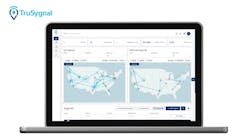According to several recent studies, carriers are reducing their reliance on brokers to fill their trucks as freight demand continues to exceed trucking capacity.
In its First Quarter Business Expectations Survey, Transport Capital Partners, LLC (TCP) reported that 87% of the carriers polled said they have used broker services less during the past three months, with 40% noting that broker freight services account for less than 5% of their revenues and another 35% of respondents adding that only 6% to 15% of their revenues come from brokers.
TCP also found that only one quarter of carriers in its most recent survey said they rely on brokers for more than 16% of their revenues.
“This is a dramatic turnaround since May of 2009 when two-thirds reported using more brokers,” noted Richard Mikes, a partner with TCP. “Obviously the freight supply demand balance has shifted dramatically to the carriers, and they are using their capacity to serve the needs of their long-term customers.”
Both Mikes and fellow TCP Partner Lana Batts said they envision a potential shift over time to an even more direct connection between carriers, shippers and brokers with the advent of real time electronic bidding on loads by prequalified carriers.
Other surveys note that the profit margins for brokers are also in decline as capacity continues to be in short supply.
The fourth annual TransCore Broker Benchmark Survey revealed that while freight brokers on average moved 10% more freight last year, their gross margins declined by 4% compared to the previous year’s survey respondents. Margins improved year-on-year for asset-based brokers, largely due to higher rates in 2010 that benefited their trucking divisions, TransCore added.
As an indicator of truckload demand and capacity on the spot market, load-to-truck ratios on TransCore’s DAT network increased to an average of 5.5 loads per available truck listed in 2010, up from just 1.8 loads per truck in 2009. This was due primarily to a year-on-year increase of 133% in truckload freight availability, coupled with a 27% decline in capacity, the firm said.
The company added that, during the same period, the national average truckload rate paid by brokers increased by 10 percent for dry vans, the dominant trailer type, from $1.12 per mile in 2009 to $1.23 in 2010, not including fuel surcharges.



